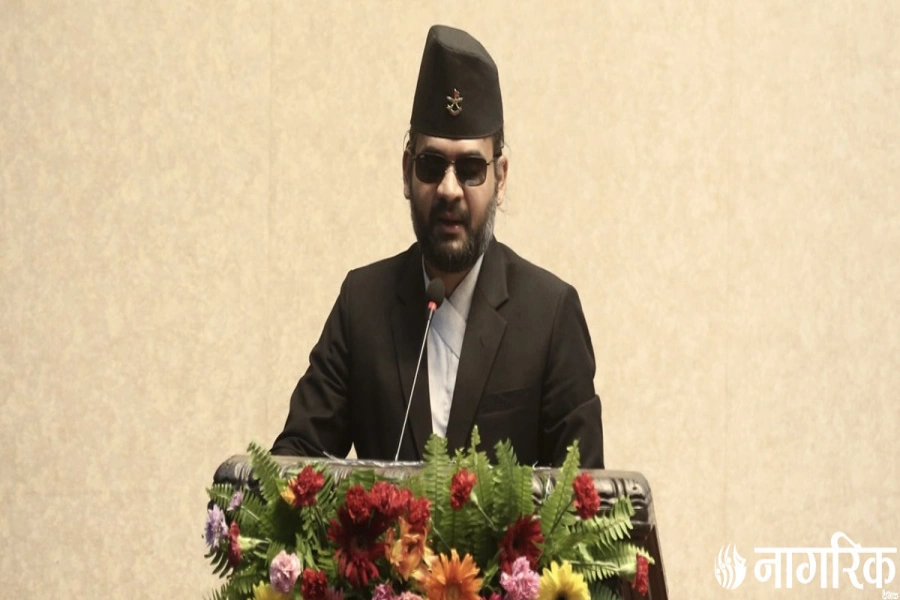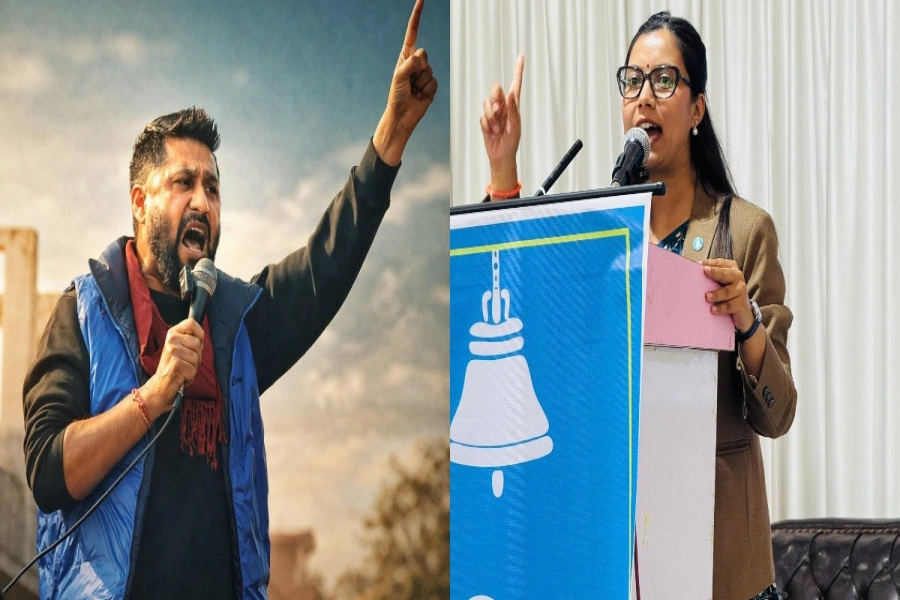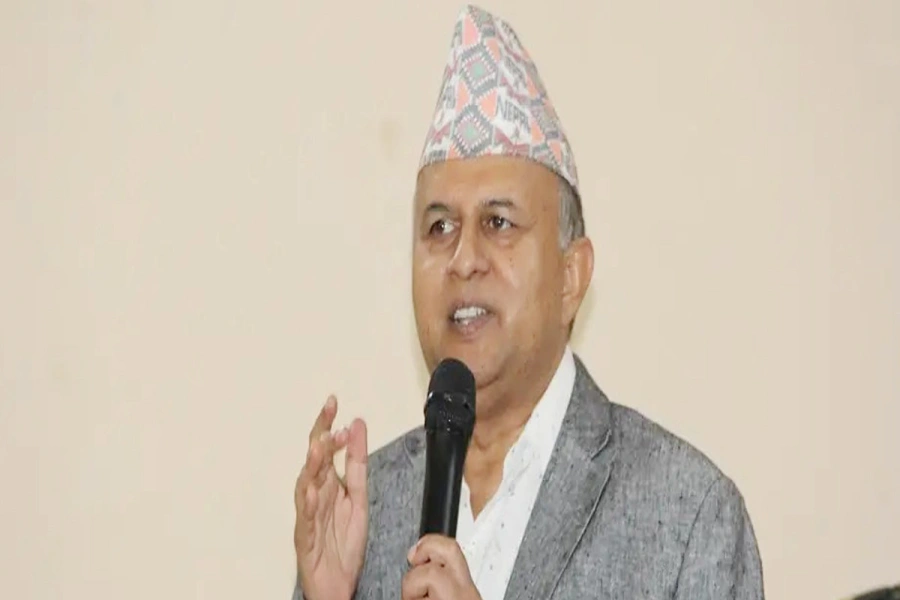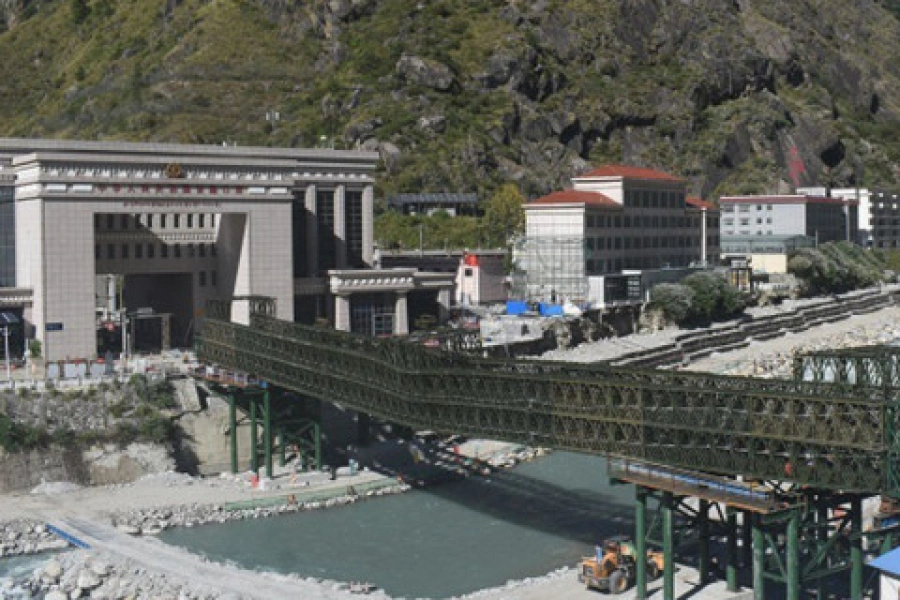Are various treaties and agreements signed between Nepal and India responsible? Or is it the hegemonic or paternalistic nature of Indian state and the small state syndrome of Nepal?
Nepal-India relations are historic in a sense that they have coexisted side by side harmoniously even before the idea of modern-day nation-states came into being. Both of them may not be the state in the modern sense of the term, but they definitely were the seat of the Vedic civilisation. For centuries, the statecraft both have practiced was guided by Dharmic values (not necessarily religious) based-on the principle of Paap (sin) and Punya (virtue). The civilisation itself is the oldest among the surviving ones in the world and its values have become Sanatan (neither new nor old).
It certainly would be interesting to acknowledge the fact that not only Nepal and India, majority of the population of South Asia share common ancestry and heritage. However, the decline (not necessarily disappearance) of the Vedic Paramparas (traditions) and triumph of the Western model of governance and subsequent arrival of the alien cultural traits have ushered in the challenges, which were never experienced before. These factors worked as catalytic force for the colonial power(s) to divide once vast swath of culturally integrated land that was known as Bharatkhanda (territorial identity) into various parts. The formation of modern nation-states, yet again, brought more ‘animosities’ than the ‘camaraderie’ in the region. This is so because modern ‘states’ do not have appropriate connecting factors that can glue societies like ours, which are more dharmic, believes in traditions yet very much enjoy the benefits brought about by the modernity. Today, some of the civilizational states here are engulfed with conceptual ambiguity in such a way that it has become difficult to ascertain ‘who they are: nation-states or state-nations? Nevertheless, irrespective of the conceptual ambiguity and geopolitical underpinnings of the nation-states, majority of the population residing in the Bharatbarsha (cultural identity) continue practicing values and traditions emanating from their own paramparas to fulfill the necessities required by the samskara (rites and rituals) part of the livelihood.
Points of divergence
With this background in place, let us move to the relations between Nepal and India. The historical relations, which many of us pride until now, are not as they were. In fact, everything seems to be rapidly changing. That said, the relations between the two countries, let alone others, are moving toward diametrically opposite direction. While India is striving to restore its lost glory as well as maintaining fine balance between modernity and tradition, Nepal, for its part, seems to have been drifting away from its ancient values. In contrast, society here is fascinated more by the so-called ‘universal values’ closer to the Judo-Christian traditions and ‘political values,’ for their part, are influenced by the ‘Marxist-Leninist-Maoist’ tradition and paraphernalia coming out of them. If this continues, Nepali and Indian societies would not ‘crisscross’ in the future. They would, rather, become two distinct societies influenced by different schools of thoughts and value systems, which, ultimately, shelve the historic relations forever. What is almost sure is that we will have more divergences than the convergences.
Although we should not expect all the time to have good relations between the two contagious states like Nepal and India, it would be worthwhile to comprehend as to when and how the relations between the two have started souring. There is no ‘cut-off’ date to this. Yet, the most plausible one, in this regard, could be found coinciding with the events when Bharat and Nepal both adopted the modern political system. The system was hailed to such an extent that it would bring about peace and prosperity as opposed to the ancient/traditional systems, which was blamed to have sustained conflicts, miseries, and poverty into the life of people. However, in the course of becoming modern and absolve all sorts of perceived ‘miseries’, many so-called ‘third world’ countries have embraced everything irrespective of the impact it would have on their own value system(s). Nepal and India, for their part, are no exception and have conceived various untested ‘ideologies’ in wholesome.
It was during the 1950s, when both the countries signed the treaty of peace and friendship. To our dismay, with the passage of time, the animosities weigh more than the friendship between the two countries at the state level and the successive governments/regimes that came to power both in Kathmandu and in New Delhi, until now, have not really succeeded in putting the relations back on track. The cracks in the relations, indeed, are becoming more noticeable now than ever before.
Why have these two countries reached this point? Who is to be blamed for this sorry state? Are various treaties/agreements signed between the two responsible? Or is it the hegemonic or paternalistic nature of Indian state and the small state syndrome of Nepal? These are the questions which require careful analysis to rebuild the fractured relations.
‘Air connectivity is a key to further strengthen bilateral rela...

The1950 treaty and subsequent treaties/agreements signed thereafter could be discussed (if they contradict with national interests of either state) and be made relevant to the need of the hour. However, by addressing the challenges brought about by the treaties/agreements may not provide solutions and salvage the relations, which are ‘historic’ in nature. Paradoxically, there are some serious issues which, for sure, have juxtaposed relations in a difficult position. What is true here is that in order to maintain ‘historic’ relations, we need to have pride in history and its paraphernalia. Appreciating history yet is not easier, at least, in the context of South Asia for many obvious reasons. For many, history itself is under question: Whose history to be taken into consideration?
Three factors
Three factors need to be discussed here—the influence of the ‘ideologies’ in society, structure of the political economy created immediately after the World War II (which in reality was an European war, not necessarily the World War), and the shifting nature of the political economy brought about by the technology and globalization. These three factors are important precisely because they disintegrate societies at the local level but integrate them at the global level which creates tensions between local and global values.
The third factor has emerged as the most relevant one as it is posing severe challenges/threats to the system adhered to in 1945—which for many is ‘zero’ year as well. Relating these factors in the case of Nepal and India would certainly give new impetus to the problems we face now and will witness in the days to come.
Nepal’s political and social spectrums are heavily influenced by the ‘ideologies’ of various political colors. Some of them even are hell bent on deconstructing everything including the history and culture that come as an obstacle on their way. For India, it has been able to do away with such ideologies—mainly the ‘Political Left’ (communist) and ‘Rights’—and is now on the journey of achieving economic and political supremacy in the world. The political left is completely decimated from the political scene and can only be found in the university classrooms, academic seminar halls, and among the so-called (il)liberals which, for sure, will have little impact.
Indian ‘rights’ for their part are conservative (not necessarily the ‘Rights’ as many of us understand) and are more interested in cultural and economic revival which would fine-tune the balance between the ‘Rights’ and the ‘Lefts’. For Nepal, the situation is somewhat different. In fact, it is only the ‘leftists’ who have dominated the political realm for considerably long time. They are still shining here. More they shine, lesser are chances of having cordial relations not only with India but also with China because they require enemy ‘within and outside’—the dialectics based on binary principle of friends and foe.
Nepal’s ‘communists’ may have been ‘ideologically’ closer to China but ‘strategically’ they are not. The communists here are also strategic in cultivating relations with ‘powers’ having various ideologies and the value system. The ‘Xi-Path’—which now overshadows all other ‘paths’—has not come as per their likings. It’s the China under President Xi, which has been exporting its soft power both in its neighborhood and beyond through its economic might.
The problem with Nepal’s ‘communists’ is that they are always uncomfortable with India and do not prefer broader engagement. For them, cultural and religious connections are of lesser values. However, for other political forces and the broader society this is not always true. Their first point of engagement is India. They might have some sort of reservations with China but not like the way ‘communists’ have with India. This said, however, none of them have understood the fact that ideologies are becoming redundant. What matters is economy, which will define identities of the ‘nation-states and their citizens’. As Chanakya said, it is artha (money in a narrow sense) which will always remain the most decisive factor in upholding ‘nationalism, among others. It will create its own ideology and dharma and China is the classic example here. For her it has always been the ‘market’ not the ‘ideology’, as the first point of preference. If ideology or soft power can ensure the market China would go for it.
Engagement with West
With regard to the engagement with the West, no reservations are being noticed primarily because the West has been providing many opportunities during the last 70 years and it is economically so attractive. Similarly, majority of Nepali elites and their families (even the commoners) now reside in the West. These elites are ‘opportunist’ to the extent that they would define relations with other countries as per their interests. Many of them keep on changing their constituencies between neighboring and friendly countries as per their comfort. If they are pro-India on Monday, they could easily become anti-India or pro-China on Tuesday but would never become truly pro-Nepal even during the ‘weekend’. It is, nevertheless, not true for the common people because this class historically has depended upon outside world for the livelihood. Still, they are patriotic, not necessarily nationalist. Ranting hollow nationalism in the context of foreign policy of smaller states sounds very ‘sexy’ but it alone does not bring food to the table for the common people (except for the salaried class and careerist politicians).
The factors related to political economy are also important. These factors, indeed, are driving many countries away from each other despite having common denominators among them. This is not true only in the case of Nepal and India but for many other developing and under-developed countries as well. The political and economic architecture after the WW II were developed in such a way that all the countries from the ‘global south’ became either dependent on that architecture or were guided by it for their political, economic and social wellbeing. With the passage of time this, somehow, has created distance between those countries which, otherwise, have always been helping each other without much of the political interests. Under these circumstances, many states have started looking at the ‘architecture’ rather than their own neighborhood or potentials thereby leaving little space for countries to interact with each other and share their value systems. This has, in the long-run, made countries rely on the ‘universal values’ promoted by the post-1945 architecture and kept them away from their own value systems which later were projected as ‘irrelevant.’ The bilateral relations, for their part, were taken into consideration when there are issues related to sharing resources or for connectivity (in the case of land-locked countries) for trade and transportation. This is what has happened with Nepal and India relations, which puts us in a seemingly difficult situation.
Today, Nepal’s situation has changed as much as India’s due, mainly, to the third factor mentioned above. People from both the countries are ‘travelling’ to the same place for education, employment and living. If this is the case, why should they rely on each other both for ‘values, political ideas, and economic opportunities? There are more options in the market than they were some seventy years ago. This precisely is the reasons why interactions at the people’s level in the neighborhood are becoming lesser and the neighborly feeling is dying out. Given the current situation, interactions would further deteriorate in the days to come. If we really want to keep the relations intact, both of us need to grow and develop together and sort out differences and have commonalities on certain issues.
The real politics
Now let us come back to the real politics of Nepal–India relations. In 2014, when Prime Minister Narendra Modi visited Nepal he was all set to ameliorate and redefine the relations between Nepal and India. However, things simply did not work from both the sides and relations started going downhill after sometime. Following the promulgation of the constitution in September 2015, Nepal had to face the brunt of economic blockade.
The reason behind the blockade, among others, as reported in media was that India had certain reservations with yet to be promulgated constitution and was seeking for amendment(s). Nepal, then, did not heed to the Indian pressure. India, too, has not really welcomed the constitution till date. For her, Nepal’s constitution is still ‘a constitution’ not ‘the constitution.’ In 2019, Modi again comes to the power with resounding majority and he now has more confidence and experience than before.
This time around, Modi may not take the same efforts and modus operandi, which he took in 2015. As per the neighborhood first policy, Modi has already paid visits to some of the neighboring countries, but he has not yet decided when to visit Nepal, although while inaugurating Nepal-India petrol pipeline, he expressed that he would soon come.
But the way things are happening it is hard to predict what exactly would transpire in the relations between the two countries. The increased Sinicization of Nepali politics, society, and economy has alarmed India despite the fact that the relations between Prime Minister Modi and President Xi are on the right path. But in the long-term, India certainly would find it difficult. It seems that we are not only pitting neighbors against each other but have also created what scholars call ‘prisoners dilemma’ for the distant but important neighbors.
Under these circumstances, New Delhi would, for sure, revisit approaches while dealing with Nepal. Its impact might well be reflected in the report prepared by the Group of Eminent Persons (EPG).The report is yet to be officially received. Even if it is officially received, implementation of the report looks difficult if not impossible. While other powers (including China and the West) are having their foothold firmly grounded in Nepal, India will not be interested to bring about changes which will move Nepal away.
Thus there is no conducive environment to take Nepal-India relations to the new height. It doesn’t appear to be so under the existing situation. India, however, is mindful of the fact that if the former moves ‘too far’ it would one day become ‘Israel’ of the east which may not be helpful for her own security as well as to promote ‘civilizational values’ discussed in the beginning. Ensuring security and promoting ‘civilizational values’ are two topmost priorities of the current Indian establishment and both cannot be accomplished without taking Nepal on board.
The author teaches and writes on political economy







































